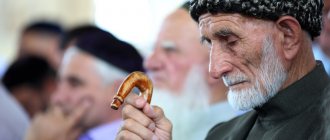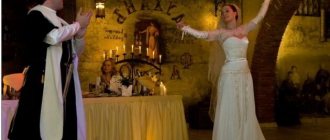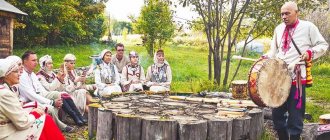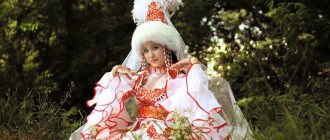The original culture of Ireland
An important role in the formation of Irish culture was played by the Celtic tribes, who captured these territories in the 3rd century. BC. – they brought language and writing into the traditions of this country. And then the culture of Ireland was formed over centuries and tempered by history... Ireland itself is a mysterious country, and many people see it mostly as a country of the Celts...
Religion of Ireland
The Irish religion has historically occupied an important role in the life of society - today, traditionally, the main religion of Ireland is Catholicism of the Latin rite. An important element in the formation of the country's religion was conversion to the Christian faith. Saint Patrick became a revered saint in the country - he preached a new religion and many cathedrals in the country are dedicated to him.
Economy of Ireland
The country's economic system is a modern, relatively small and trade-dependent economy. There are two national currencies in use in Ireland: the official currency is the euro and the local currency of the Northern regions is the pound sterling. The Irish economy shows growth over 1995-2000. on average by 10%. You can add here the percentages, the growth of which is facilitated by tourism in Ireland .
Irish holiday calendar
Residents of the “Emerald Isle” love to celebrate holidays, some of them are official holidays, there are nine in total, but there are also those that are celebrated by family or church community, modern ones and those that have their roots going back centuries. Sabina Salim looked into the Irish holiday calendar
December
December 25 , official holiday - Christmas according to the Gregorian calendar. The most ancient and popular holiday in the Christian world.
On this day, following traditions: they attend church services, set rich tables and exchange gifts. The unique charm of the holiday is given by lush decorations, street illumination, and the indispensable Christmas tree.
The atmosphere is simply magical! And no matter how pessimists criticize the dubious origins of the holiday and its commercial orientation, general rejoicing cannot be taken away or banned. Moreover, the most famous symbol of Christmas, Santa Claus, is on the way.
On December 24 , Santa hurries around the world on his sky sleigh, landing on the roof of every house and delivering gifts through the fireplace chimney.
December 26 , an official holiday, is the Day of St. Stephen, the first Christian martyr, a famous patron of horses. In this regard, horse racing is organized in Ireland. Among the traditions is the Christmas swim, which has become a charity event. Given the local climate, the activity is certainly not for the faint of heart, but it is a proven hangover cure.
December 31 is the main calendar holiday of the year - New Year's Eve. The date was legalized back in 46 BC. In Ancient Rome, this day was dedicated to the god of all beginnings - the two-faced Janus. And in Russia it took root, and even became more popular than Christmas thanks to Soviet power. The Irish were previously indifferent to the change of date and began to widely celebrate the New Year only in the new millennium.
January
January 1st is an official day off. On this day, the Irish have a tradition, in order not to jinx family wealth and get rid of bad luck, you need to knock on freshly baked bread. Better yet, take a loaf and hit it against neighboring walls and doors - good luck is guaranteed.
January 6 – small or “women’s Christmas” – paying tribute to ancient traditions, ladies can finally say goodbye to Christmas troubles and have a drink with friends
January 21 is Irish Independence Day. On January 21, 1919, the first meeting of the Irish Parliament, the Dail Eireann, took place. Deputies gathered at the residence of the Lord Mayor of Dublin (Mansion House) and declared Ireland independent.
Independence stamp
February
February 1 is St. Brigid's Day, the first day of spring in Irish, the holiday of Imbolc. Brigid of Ireland (451 or c. 453, Fogart, Ireland - February 1, 525 (or 523), Kildare, Ireland), she is also the holy abbess of Kildare, she is also the princess of Ireland.
Among the traditions of the holiday are bread in the shape of a cross, weaving reed crosses and the obligatory cessation of rotation of the wheel; Therefore, you cannot drive a bicycle on St Brigid's Day. But handkerchiefs and pieces of cloth were hung everywhere as a guarantee of the health of family members for the whole year. It was believed that if the saint touched them, they would acquire healing properties.
Brigid of Ireland - Celtic goddess and Christian saint
February 7 is the day of St. Mel, the patron saint of singles. If it so happens that you are not in a relationship, you should ask St. Mel for help, and then on February 14, “Valentine’s Day,” you probably won’t be alone!
Saint Mel - patron saint of singles
February 14 – Valentine's Day or “Valentine's Day”
There are many interesting legends and traditions associated with the name of St. Valentine; unfortunately, there is little reliable information, so to this day one can only guess who St. Valentine was, to whom we owe such a wonderful holiday. By the way, the relics of the saint are kept in Dublin in the Carmelite Church.
St. Valentine welcomes lovers... in Dublin!
February 29 - St. Oswald's Day is considered the only day when a woman can propose marriage to a man. The tradition originated in Ireland back in the 5th century, and was consolidated on February 29 after the publication of a special law in Scotland in the 13th century.
On February 29, ladies can propose marriage to gentlemen
March
March 8 is International Women's Day, celebrated by Irish feminists
March 17 , an official day off, St. Patrick's Day, the patron saint of Ireland - parades and festivals, competitions and competitions, exhibitions and fairs are held, emphasizing the enormous importance of Irish Earth Day.
Last Sunday in March o
April
April 1 is April Fool's Day, in our opinion, or Fool's Day, according to Irish tradition, which has become widespread.
Most often, Easter falls in April according to the Gregorian calendar. Moreover, the only official holiday is Easter Monday. Good Friday, although a “bank holiday”, is not an official holiday.
Another unusual holiday celebrated these days is the anniversary of the Easter Rising. The event has a specific date, April 24, 1916 , but the Irish, since 1996 (80th anniversary of the uprising), have celebrated it on these days.
April 17, 2021 establishment of the “Limerick Soviet Republic”, which lasted only 10 days.
May
May 1 - Beltane, celebrated on the night of April 30 to May 1, was one of the two most important holidays of the Celtic calendar year, which was divided into two equal periods, opening with major holidays - Samhain (Samhain) on November 1 and Beltane (Beltane, Beltane) - 1st of May. Another name is the feast of the shepherds. Rumor has it that it was Beltane that the ancient Celts founded the internationally recognized “Workers' Day of Solidarity”. Celtic shepherds lit fires and led livestock between them to cleanse them of “filth” and ensure growth; they attached bouquets of primroses and hawthorn to doorways to protect relatives from evil.
May 1 – Celtic holiday Beltane
First Monday in May , official holiday
June
First Monday in June , official holiday
June 9 is the day of St. Columbus of Ireland. The estimated date of birth of Saint Columba ranges between 521 and 523, his birthplace being Gartan in the north of Ireland. He belonged to the royal family of the Ui Neills and from the very beginning was considered by his relatives as a possible candidate for the throne of the High King. However, he chose a different path, devoting himself to serving the church from his early youth.
Saint Columba of Ireland
June 16 is Bloom's Day or Bloomsday, dedicated to the famous writer James Joyce and his immortal work “Ulysses”. On this day in 1904, the events of the novel take place.
Third Sunday in June – Fathers Day
August
August 1 – Lughnasadh, a festival of fertility. According to legend, it was installed by the Sun God himself. In Ireland it is called Lughnasadh or Lammas (festivities in honor of Lugh). Once upon a time, the significance of this holiday was not much inferior to Beltane and Samhain (present-day Halloween).
Lughnasadh - Celtic fertility festival
First Monday in August , official holiday
October
Last Monday of October , official holiday
October 31st , Halloween or Samhain is the Celtic New Year.
Halloween or Old New Year in Irish
November
November 3 , feast day of Saint Columban, patron saint of bikers.
The holidays are a great opportunity to unite and socialize.
They are necessary for psychological and physical relaxation, relieving tension, and strengthening connections with family and friends.
Holidays allow you to break out of routine and feel like part of a larger community; because it is so important not to feel alone.
Celebrate, friends! Enjoy life, congratulate your friends and not so well; Share kindness and happiness - this is the best holiday for the soul.
Sabina Salim
Post Views: 13,057
Tags: History of Ireland, Sabine Salem
Irish art
Among the earliest monuments of art in this country are ornaments found in the Neolithic era at sites such as Newgrange. Next comes the art of the Bronze Age - gold jewelry, book miniatures and architecture. The art of Ireland practically became part of the British during the reign of the invaders, but not the culture . Later, after the national revival, the traditions of Irish fine art began to develop.
How New Year's holidays are celebrated in Northern Ireland
One of the most fun and favorite winter holidays in Northern Ireland is, naturally, the New Year, which the whole world celebrates on January 1st. How is this holiday different in the country from the “Emerald Isle”? Don't they decorate the Christmas tree or give gifts there? No, all this, of course, exists. But, besides the green beauty, decorated with various toys, Northern Ireland has its own, very interesting New Year’s customs and traditions.
For example, on the evening of December 31, the Irish open the front door of their house to “let out the Old Year and let the New Year in.” And everyone who enters the house with him at this time will be the most welcome guest. There is something pagan about this, isn't there? With approximately the same deep meaning, on this day candles are always lit near the window, bells are rung, and loud songs are sung. And after the chimes strike midnight, residents of Northern Ireland like to gather in large noisy groups and go to celebrate the holiday in the streets and squares of their city.
In truth, there are probably no public holidays in Ireland that the inhabitants of this cheerful country would celebrate in a close family circle at home. And what can we say about pagan festivals such as Celtic Halloween or Beltane. Parades, dancing, jokes and songs, bonfires and firecrackers - all this is an integral part of the holidays of the emerald island.
Customs and traditions of Ireland
This country of Ireland is rich in its customs and folk traditions, this is not surprising - the local people are trying with all their might to preserve it. One of the most striking examples is the Irish Fairs - a cheerful and noisy festival with national Irish dances, music, songs and magic tricks. The customs and traditions of Ireland, as in other countries, require the presence of the most important holiday of the year - for them it is St. Patrick's Day.
from Journeying.ru
The country of Ireland has an ancient and rich culture; as long as the country has existed, backgammon has been trying to preserve and preserve the culture of the country for as long. The culture of Ireland is rich in a large number of customs and folk traditions.
One of these traditions is fairs, which have been held since ancient times; the manifestation of such a tradition has become an excellent occasion for various entertainments. People in Ireland love to dance, so whenever there is an occasion, for example, at fairs, people dance folk dances, musicians, magicians, and acrobats perform in the squares in the city center. Every Irish dance is a work of art. Almost every resident of the country loves to dance. This peculiar feature of the Irish is visible in everything. The fairs also host various competitions, a great example being harlin-on which is a form of hockey and Gaelic football.
In Ireland there is an interesting tradition: on New Year's Eve it is customary to leave the doors of the house open so that anyone who comes can feel welcome. There is an atmosphere of general trust in Ireland, especially during these festive periods. And, indeed, nothing ever happens here, because the residents sacredly honor the holiday traditions of their country.
Like in any other country, in Ireland there is one most important and important holiday; in Ireland, St. Patrick's Day is considered such a holiday, it is celebrated annually on March 17th. Celebrating this day is a special event for the Irish. Preparations begin in advance so that everything goes well on the day of the holiday. On this holiday, people dress in green clothes, and in addition to the parades, on this day it is customary to organize parties with music and a lot of beer. But back in the day, times were a little different, namely, all the pubs closed because most of the residents went to church for mass. Today is St. Patrick's Day - it's music and favorite dances again.
The cuisine of Ireland is slightly different from the cuisines of other European countries; it does not have any specialties, its basis is ordinary peasant food. The modern cuisine that we now have in Ireland originated in the second half of the sixteenth century, along with the introduction of potatoes to the country.
Irish stew is considered the most important dish in Ireland; potatoes are its main part. There are an infinite number of recipes that can be used to prepare stew, and it is now almost impossible to determine the first one. But it is assumed that the stew once included all the ingredients that could be found in the kitchen. A modern recipe for making stew looks like this: onions, rutabaga, potatoes, lamb neck, thyme, salt and spices. Potatoes are also used to prepare another important Irish dish, colcannion. It is prepared from chopped cabbage, mashed potatoes, and of course added onions and seasonings.
If an Irishman and a Russian get together in a conversation about food, then they will certainly reach one undeniable opinion: herring always goes well with potatoes. Pickled or as part of a casserole, herring is eaten in Ireland all year round; this casserole together with herring is called “Jensson's Temptation”. But it is considered a special delicacy if you manage to catch a small herring, from May to September.
In addition to all the dishes from Irish cuisine, without any doubt we can say that the main attraction is Irish whiskey, and Irish coffee is not far behind it. Hot coffee along with whiskey perfectly warms you up in rainy weather, which often happens in the country.











